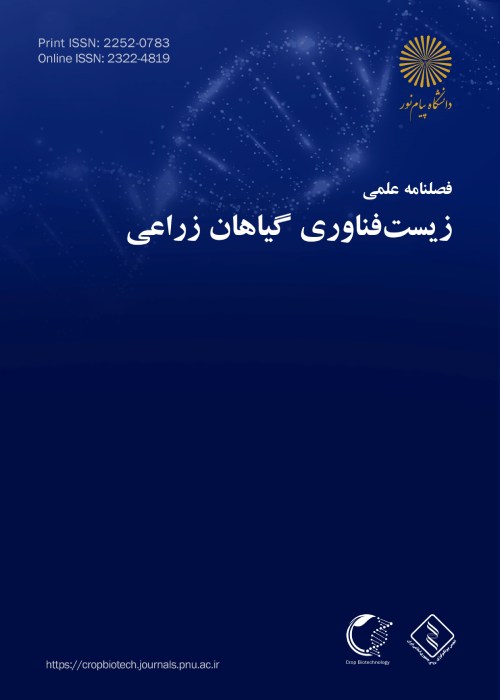Co-expression network analysis of common bean transcriptome in order to identify modules and hub genes involved in resistance to Tetranychus urticae (Acari, Tetranychidae)
Author(s):
Article Type:
Research/Original Article (دارای رتبه معتبر)
Abstract:
Two-spotted spider mite (Tetranychus urticae Koch) is one of the most important pests of beans (Phaseolus vulgaris L.). Since, complex gene networks are involved in creating sensitivity or resistance against the two-spotted spider mite; therefore, in this research we used biological system methods to identify key networks. For this purpose, we used the RNA-Seq data related to the two-spotted spider mite stress on common bean plant. After providing the gene expression matrix, molecular networks were analyzed using weighted co-expression network analysis (WGCNA). After the modules identification, the gene functions in each module were investigated and analyzed. According to the results, a total of 699 genes were identified with differential expression in response to two-spotted spider mite stress, which were placed in 7 co-expression modules through hierarchical clustering. Gene ontology and interaction analysis of key genes using the String database showed that the response of common bean transcriptome to two-spotted spider mite infestation includes genes encoding protein kinases, catalysts, transcription factors, and metabolite production and pathways of hormonal message transmission. It is notable that among the most important genes that showed co-expression, WRKY and lipoxygenase were highlighted. The turquoise module had the higher number of genes involved in resistance, and this module and the yellow module had the highest correlation with the resistant variety after five and one day of contamination, respectively. Also, the black module had the highest correlation with the sensitive variety after five days of contamination. In conclusion, this study increases our knowledge of the molecular mechanisms involved in resistance to the two-spotted spider mite. Also, the genes examined in this research can be introduced as breeding targets to create resistance.
Keywords:
Language:
Persian
Published:
Journal of Crop Biotechnology, Volume:11 Issue: 38, 2023
Pages:
61 to 74
magiran.com/p2540900
دانلود و مطالعه متن این مقاله با یکی از روشهای زیر امکان پذیر است:
اشتراک شخصی
با عضویت و پرداخت آنلاین حق اشتراک یکساله به مبلغ 1,390,000ريال میتوانید 70 عنوان مطلب دانلود کنید!
اشتراک سازمانی
به کتابخانه دانشگاه یا محل کار خود پیشنهاد کنید تا اشتراک سازمانی این پایگاه را برای دسترسی نامحدود همه کاربران به متن مطالب تهیه نمایند!
توجه!
- حق عضویت دریافتی صرف حمایت از نشریات عضو و نگهداری، تکمیل و توسعه مگیران میشود.
- پرداخت حق اشتراک و دانلود مقالات اجازه بازنشر آن در سایر رسانههای چاپی و دیجیتال را به کاربر نمیدهد.
In order to view content subscription is required
Personal subscription
Subscribe magiran.com for 70 € euros via PayPal and download 70 articles during a year.
Organization subscription
Please contact us to subscribe your university or library for unlimited access!


